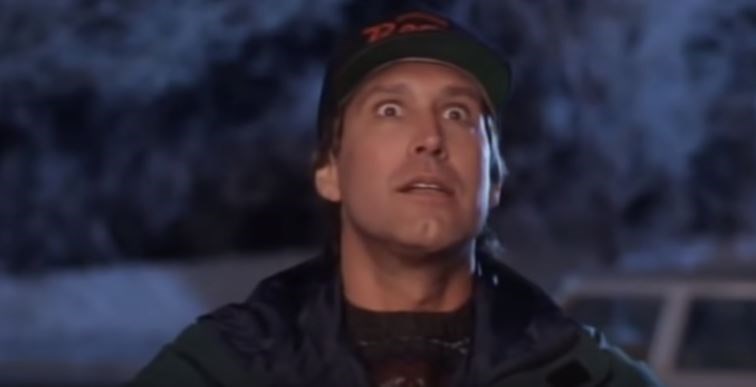Is your house is visible from the sky just like the Griswolds from the beloved Christmas movie National Lampoon's Christmas Vacation? If it is, you may feel like a Grinch after you read this.
A new BC Hydro report has found a roughly 40 per cent drop in outdoor lighting load by 2011 because of the large increase in LEDs being used. LEDs use 90 per cent less energy.
But after 2012, it hasn't been cheerful news. Power consumption has actually increased by 15 per cent since then because decorating enthusiasts are putting out more elaborate outdoor displays.
The appearance of LED lights began in the early 2000s, specifically in 2002, when BC Hydro bought 20,000 strands. They were not available to residents for purchase; instead, they were provided to local business associations to decorate public spaces during the 2002 holiday season.
In 2003, retail partners worked with BC Hydro to get LED lights onto store shelves.
"We tried to encourage the adoption of the new technology," BC Hydro spokesperson Tanya Fish tells PrinceGeorgeMatters. "We kind of helped that relationship to get them (LEDs) on the shelf."
The price of LED lights has understandably come down significantly, Fish says. When they first came out, they were more expensive to purchase than incandescent (as is the same with any new product rolled out).
"But, obviously, with the electricity savings, you can make that money back in one season buying a strand," she says.
Here's a comparison: three strands of standard size holiday lights (with 75 C9 bulbs) on for six hours a day over roughly six weeks (Dec. 1 to Jan.15) cost the following for each kind of light:
- Incandescents (525 watts; the older kind light bulbs): $14.10
- LEDs (six watts): $0.18
When LEDs first rolled out, there were rebates offered by BC Hydro for holiday LEDs. The incentive isn't offered anymore, but Fish says most stores don't sell incandescent bulbs.
"I think there are some options online; you can buy incandescents from other countries and different places," she says. "But retailers like Canadian Tire and places like that, it's all basically LEDs now."
The recent survey found a shocking statistic: one in three British Columbians have a neighbour with a mega Christmas display. The main culprits these Christmas lovers are using are:
- Installing inflatable holiday decorations: these decorations have become increasingly popular over the past decade, and add to costs because they are typically run 24/7 and use a lot more power than a strand of LED bulbs.
- Using lots of lights and electronics: four per cent said they install more than 750 lights each year, and this number can climb to over 100,000 lights for the biggest displays.
- Pushing the limits: 15 per cent admit to blowing a breaker switch from overloading their lights and decorations.
According to BC Hydro, Clark Griswold's home would have cost him close to $4,700 during the holiday season if they used incandescent lights. If he had used LED lights, it would have only been a $50 bill.
Of the 800 B.C. residents surveyed in the report, 57 per cent put out some kind of decor. Here's how everyone fared:
- The Grinch (42 per cent): no holiday lights, no added cost.
- The holiday minimalist (38 per cent): three strands of lights, on average.
- The holiday enthusiast (13 per cent): eight strands of lights, on average.
- The holiday fanatic – also known as ‘The Griswold’ (6 per cent): at least 10 strands of lights, and often much more to light up the entire block.
While LED lights are the most cost-friendly choice, one-third of the Christmas displays in B.C. are still using older incandescent lights. You can save close to $40 over the holiday season if you switch eight strands of incandescent lights to LEDs.
They also last 10 times longer, which means you won't be a scrooge when you realize your old lights have died.



